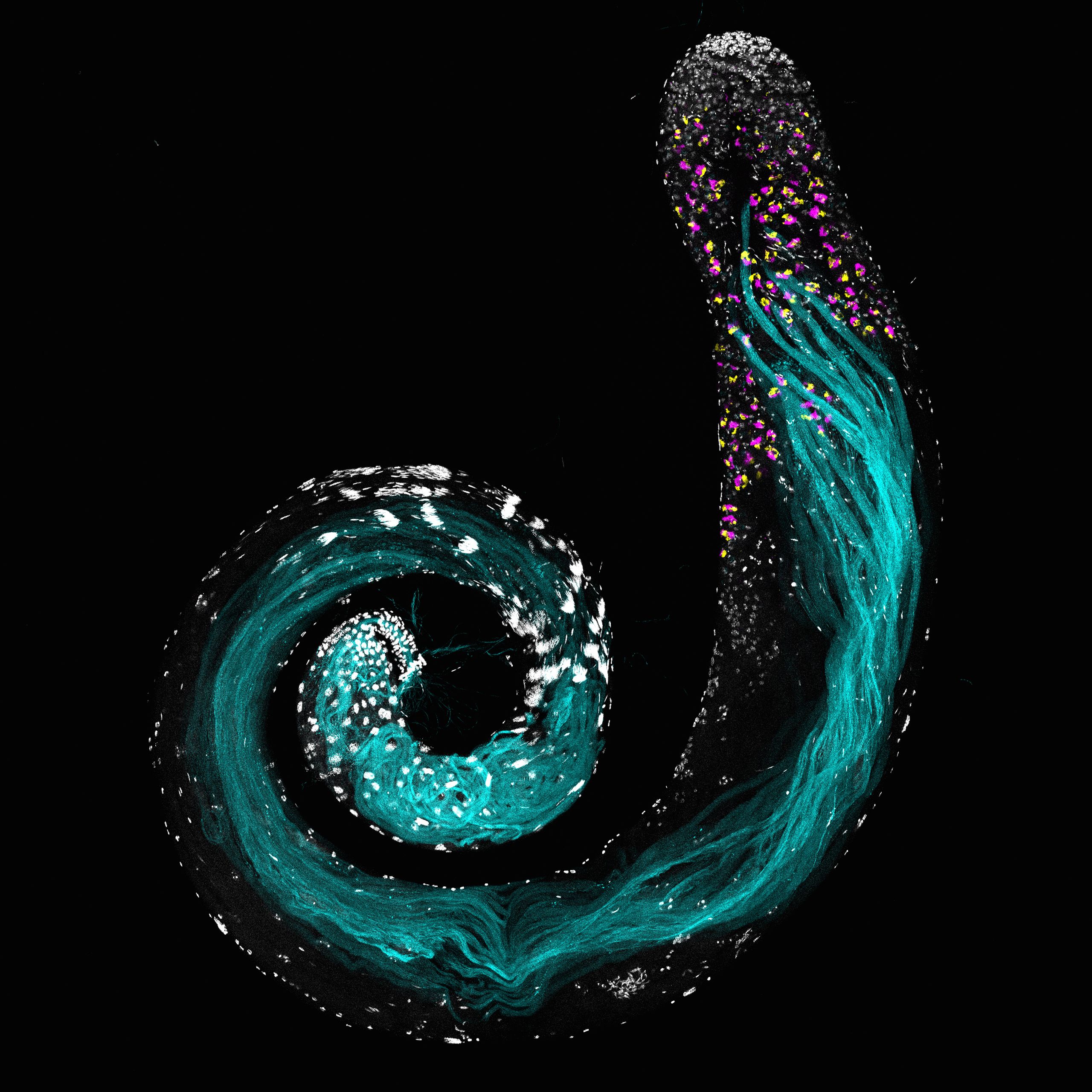Alien sand dunes and a record-breaking cyclone — March’s best science images
The month’s sharpest science shots, selected by Nature’s photo team.

Sperm spiral. Drosophila fruit flies produce some of the world’s longest sperm. Their germ cells undergo incredible shape changes as the sperm develops — a process captured in this microscopy image of a fly testis. The picture was a winner at the 2023 MIT Koch Institute Image Awards. The sperm-cell nuclei are white. Each sperm starts off as a stem cell (shown clustered at the top of the image) that is pushed to the other end of the spiral as it develops and elongates into mature sperm (cyan) measuring about 2 millimetres. The magenta and yellow highlight regions where genetic material essential for sperm development is expressed.
Credit: NASA, ESA, CSA, STScI, ESA/Hubble, Webb ERO Production Team
Doomed star. A distinctive halo of gas and dust surrounds this ‘Wolf–Rayet’ star — the name given to hot, bright stars that are losing mass and are about to die in a massive supernova explosion. The first image is a composite of images taken by the James Webb Space Telescope, combining near-infrared and mid-infrared wavelengths of light. The near-infrared camera can balance the brightness of the star with the fainter gas and dust surrounding it, revealing fine details of the gas cloud’s structure. The second image is an older optical image taken by the Hubble Space Telescope.

Snowy springtime. This badger was spotted foraging on a snowy March night in Brecon Beacons National Park, UK. Badgers (Meles meles) are the country’s largest wild carnivorous mammals. They are rarely seen outside in the day and tend to avoid people, preferring to emerge from their underground homes at night to search for food.

Credit: Luiz Rocha, California Academy of Sciences
Credit: Luiz Rocha, California Academy of Sciences
Reef research. Using data gathered during hundreds of dives at sites in the Pacific and Atlantic oceans, researchers have shown that coral reefs deep beneath the surface function differently from their shallow-water counterparts. “Everything we thought we knew about coral-reef assembly rules — the ecological pressures that explain what species or groups of organisms survive and thrive in a given ecosystem — changes with depth,” said Hudson Pinheiro, a biologist at the University of São Paulo, São Sebastião, Brazil. This means that deeper reefs are unlikely to offer refuge to shallow-water fish affected by climate change.

Credit: Karmel Ritson and Grete Nummert
Credit: Karmel Ritson and Grete Nummert
Mysterious glow. Researchers at Tallinn Zoo have found that garden dormice (Eliomys quercinus) glow under ultraviolet light — their fur transforms from brown (left) to bright purple (middle). If the UV light passes through a yellow filter, the mice appear bright red, with blue-green feet and noses (right). The phenomenon — called photoluminescence — has been observed in several other animal species. But the scientists don’t yet know why it happens in dormice. It could allow the rodents to signal to each other or to avoid predators by blending in with certain plants. Or it could just be a side effect of something they ate — no one is really sure.

Martian dunes. These unusually circular sand dunes on the surface of Mars were snapped by the HiRISE camera onboard NASA’s Mars Reconnaissance Orbiter spacecraft, which has been orbiting and studying the red planet since 2006. The dunes have been shaped by surface winds, and they are slightly asymmetrical with steep slopes on their south sides.
Credit: CIRA/CSU & EUMETSAT. This video has no sound.
Credit: CIRA/CSU & EUMETSAT. This video has no sound.
Swirling cyclone. Cyclone Freddy brought high winds and intense rainfall to Madagascar, Mozambique and parts of southeast Africa in late February and early March. This time-lapse video, captured by the European satellite Meteosat-9, shows the storm’s three-week-long journey across the Indian Ocean. During the 8,000-kilometre trip, Freddy broke the record for ‘accumulated cyclone energy’, a measure of its strength over time.

Credit: Koller Auctions/Oliver Nanzig
Credit: Koller Auctions/Oliver Nanzig
T. rex for sale. For the first time in Europe, a Tyrannosaurus rex fossil will go under the hammer at the Koller auction house in Zurich, Switzerland, next month. The 67-million-year-old skeleton, nicknamed Trinity, is a mash-up of bones from three dinosaurs unearthed between 2008 and 2013 in Montana and Wyoming. Trinity has been valued at US$6.5 million to $8.7 million.

Hidden highways. Researchers used a 3D imaging technique to visualize the lymph network (blue) within a kidney tumour as well as blood vessels (purple) and immune cells (yellow). These channels are usually responsible for waste disposal, but cancers can hijack the system and use it to spread tumour cells. The networks are incredibly difficult to see using conventional microscopy techniques. The snap won an image competition for researchers run by Great Ormond Street Hospital in London.